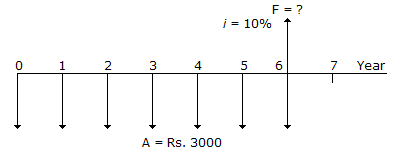Practice Test: Question Set - 01
1. In a cash flow series:
- (A) Uniform
gradient signifies that an income or disbursement changes by the same amount in
each interest period
- (B) Either an increase or decrease in the amount of a cash flow is called the gradient
- (C) The gradient
in the cash flow may be positive or negative
- (D) All of these
2. In a cash-flow diagram:
- (A) Time 0 is
considered to be the present
- (B) Time 1 is
considered to be the end of time period 1
- (C) A vertical
arrow pointing up indicates a positive cash flow
- (D) All of these
3. Which method is adopted to develop an approximate or conceptual estimate for perimeter works for buildings from the following?
- (A) Base unit
method
- (B) Cost per
function method
- (C) Cost per
square metre method
- (D) Cost per
linear metre method
4. Pick up the correct statement from the following:
- (A) The ratio of
current assets, loans and advances, and the current liquidity is called current
ratio
- (B) Larger the
current ratio, larger is the margin of safety
- (C) The operating profit is the difference between gross profit and operating expenses
- (D) All of these
5. The ratio of current assets to current liabilities is known as
- (A) Liquidity
ratio
- (B) Current
ratio
- (C) Acid-Test
(or Quick) ratio
- (D) Debts ratio
6. In the cash-flow diagram shown in the given figure
- (A) Equal
deposits of Rs 3000 per year (A) are made, starting now
- (B) The rate of
interest is 10% per year account
- (C) The amount accumulated after the seventh deposit is to be computed
- (D) All of these
7. The more critical (or severe) test of the firm's liquidity can be judged by:
- (A) Liquidity
ratio
- (B) Current
ratio
- (C) Acid-Test
(or Quick) ratio
- (D) Debts ratio
8. If interest is paid more than once in a year, ‘i’ is the rate of interest per year, ‘n’ is the number of periods in years and ‘m’ is a number of periods per years, compound amount factor (CAF) is:
- (A) (1 + i/m)n
- (B) (1 + i/n)m
- (C) (1 + i/n)1/m
- (D) (1 + i/m)1/n
9. Pick up the correct reason for making conceptual (or preliminary) estimate from the following:
- (A) To have a check on a definitive cost estimate
- (B) To check quotations from contractors and/or sub-contractors
- (C) To compute target estimate for the owner while drawing and specifications are in initial stage
- (D) All of these
10. Pick up the correct method adopted for developing the approximate or conceptual estimates from the following:
- (A) Base unit
method
- (B) Cost per
function method
- (C) Cost per
square metre
- (D) All of these
Next Tests:

